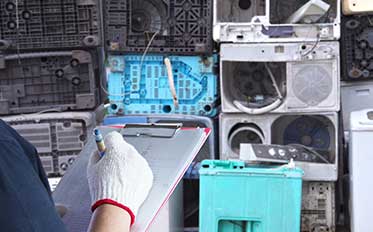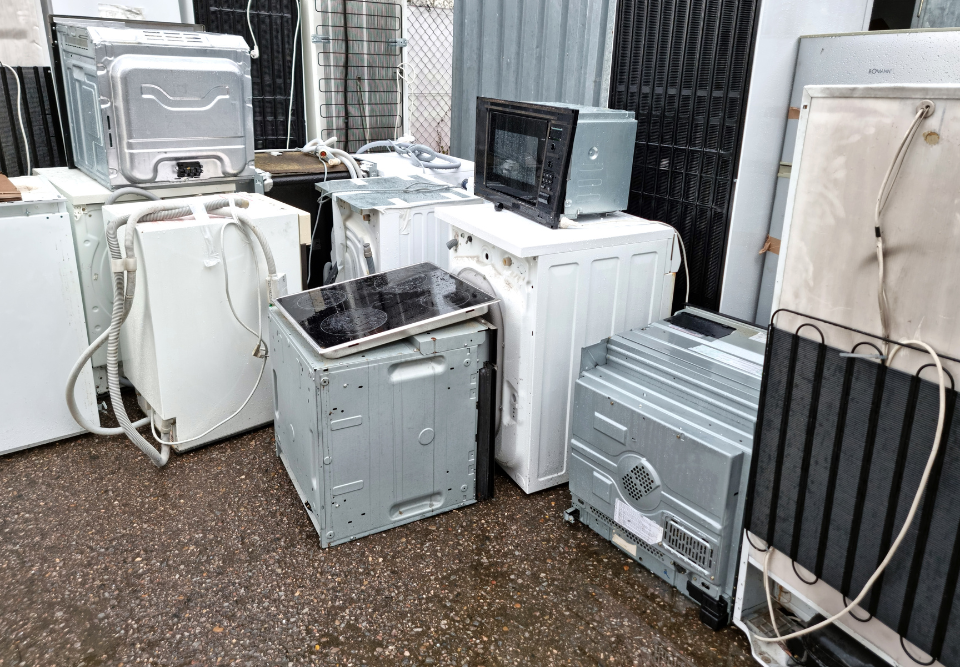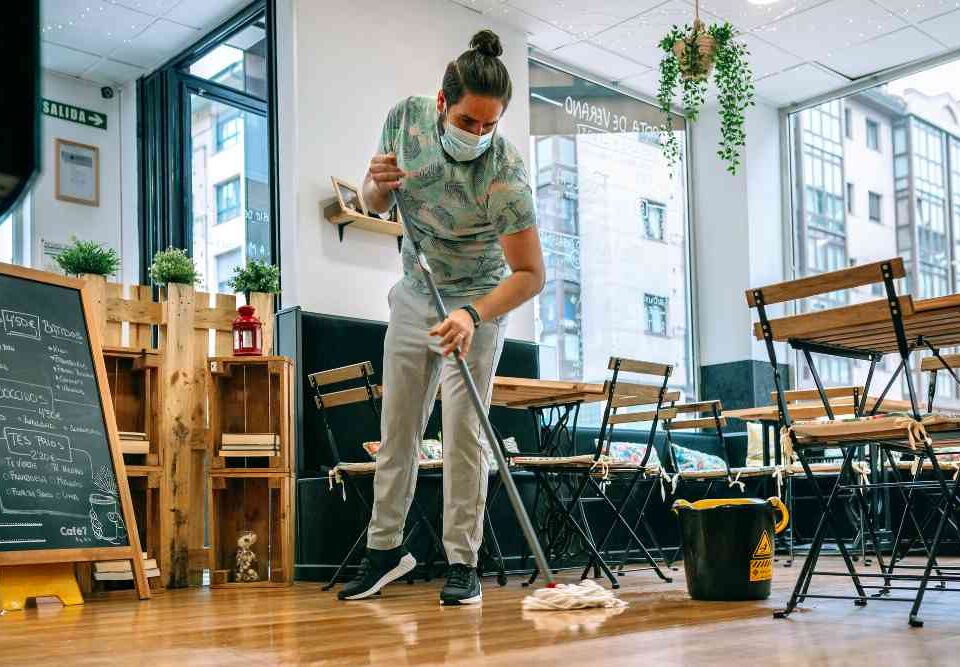
How to Ensure Safe Yard Waste Disposal
August 13, 2025
How Furniture Removal Can Improve Your Home’s Appearance
August 13, 2025How to Safely Remove Appliances from Your Home
Preparing Your Home Before Moving Large Appliances
Before you even think about sliding that heavy refrigerator away from the wall, preparation is your best friend. A home that is cluttered or unorganized can create unnecessary risks during removal. Clear a wide path from the appliance to the nearest exit, paying attention to rugs, furniture, or cords that could trip someone. If your doorways are narrow, measure the appliance and check dimensions so you do not get stuck halfway out. Small adjustments like removing doors from hinges or temporarily moving furniture can make a huge difference in the flow of the process.
Preparation also involves protecting the surrounding area. Appliances can scratch hardwood floors or chip paint when handled roughly. Placing cardboard or old blankets under the item gives you some buffer against these accidents. Turning off water lines, disconnecting hoses, and cutting power supplies beforehand ensures there are no leaks or sparks while the appliance is being moved. These steps might feel like small details, but they can prevent big headaches when the process gets underway.
Choosing the Right Equipment for Appliance Removal
When it comes to moving something bulky like a washing machine or stove, your muscles alone may not be enough. Specialized tools exist for this exact purpose, and using them can turn a risky task into a manageable one. A sturdy dolly with straps keeps the weight balanced, allowing you to roll heavy appliances with less strain. Furniture sliders are another hidden gem, perfect for shifting large machines across smooth surfaces without causing scratches or gouges in the floor.
It is also worth considering protective gear for yourself. Gloves with a strong grip reduce the chance of appliances slipping out of your hands. Steel-toed boots can save your feet if something falls during the process. Even back braces, often overlooked, can provide extra support when lifting is unavoidable. The right equipment does not just make things easier, it adds a crucial layer of safety that protects both your home and your body from unnecessary harm.

Understanding the Risks of Appliance Removal
Removing appliances may seem straightforward until you encounter hidden hazards. Refrigerators and freezers, for instance, can contain refrigerants that should not be released into the air. Handling them without care can lead to environmental harm or even fines if local regulations are violated. Washers and dishwashers sometimes hold onto small amounts of water that can spill across your floor, creating slip hazards or water damage.
Then there is the simple danger of physical injury. One wrong move while trying to pivot a stove through a doorway can result in strained muscles or worse. Sharp edges on certain appliances can cut skin if you are not cautious. Recognizing these risks ahead of time allows you to take steps to minimize them, such as wearing proper protection or consulting with professionals when needed. Safety during appliance removal is not about fear but about awareness and preparation.
Disconnecting Appliances the Right Way
Before lifting or moving any appliance, the very first step is disconnecting it safely. For electrical units, unplugging might sound simple, but cords should be inspected for frays or damage before removal. Never yank on the cord, as this can damage the outlet or wiring. For appliances like ovens or dryers that may be hardwired, it is essential to cut power at the breaker to avoid shock.
Water-connected appliances like dishwashers or washing machines require extra care. Shut off the water supply before disconnecting hoses, and keep a bucket or towels nearby to catch any leftover water. For gas appliances, this becomes even more delicate. Gas lines should always be closed tightly, and if you smell anything unusual, a professional should handle the disconnection. Taking shortcuts here can put your home and health at risk, so patience and caution pay off.
Protecting Your Floors and Walls During Removal
One of the most overlooked aspects of moving large appliances is the toll it can take on your home’s interior. Heavy machines dragged across wood or tile can leave behind deep scratches that are costly to repair. Placing a protective layer such as cardboard sheets, blankets, or plywood boards can act as a shield against this kind of damage.
Walls also suffer during careless removal. Narrow hallways and doorframes are especially prone to dents and chipped paint. Wrapping appliances in old sheets or padded covers gives them a layer of cushioning. Even taping foam to doorframes can prevent sharp corners from gouging surfaces. By treating your floors and walls with care, you protect not just the home’s appearance but also its long-term value.
Timing Your Appliance Removal for Safety and Ease
The time of day you choose to remove appliances can influence how smoothly the process goes. Hot afternoons can make physical labor more exhausting, increasing the risk of mistakes. Early mornings or cooler evenings often provide better conditions for heavy lifting. If you are working in an area with heavy foot traffic, planning the removal during quieter times prevents unnecessary obstacles.
Timing also plays a role in coordinating disposal. Recycling centers and donation facilities often have specific drop-off hours. Planning your removal to match their availability saves you the hassle of storing bulky machines for days on end. A little foresight in timing allows everything to flow more seamlessly, from the moment the appliance leaves your kitchen to the time it reaches its final destination.
Working With a Partner for Safer Appliance Removal
Some appliances are simply too heavy or awkward for one person to handle safely. Trying to manage them alone can lead to accidents, from dropping the appliance to injuring your back. Having an extra set of hands means you can coordinate movements, balance the weight better, and maneuver through tight spaces with more control. Communication is just as important as strength, so plan each step together before moving.
A partner also provides an extra level of security when lifting or tilting appliances. If one person loses grip, the other can stabilize the load. They can also act as a spotter, watching for obstacles along the path that might not be visible to the person carrying. Teamwork not only makes the process faster but greatly reduces the chance of damage or injury.
Considering the Environmental Impact of Disposal
Removing an appliance is not only about getting it out of your home, but also about what happens afterward. Many appliances contain materials that should not end up in landfills, such as metals, plastics, and refrigerants. Recycling programs can recover these materials and keep them from polluting the environment. It takes a little extra effort, but the long-term benefits make it worthwhile.
Donating appliances that still work is another eco-friendly option. Local charities or community organizations often welcome gently used items, giving them a second life in another home. Even parts from non-functioning appliances can sometimes be salvaged for reuse. Considering the environmental impact adds meaning to the task and ensures that your decision to remove an appliance does not come at the planet’s expense.
Transporting Appliances Without Damage
Once the appliance is out the door, the challenge of transporting it begins. Loading it into a vehicle requires balance and planning to prevent both personal injury and damage to the machine. Appliances should be kept upright when possible, especially refrigerators that rely on internal fluids for cooling. Laying them flat can cause issues once they are plugged back in.
Securing the appliance during transit is equally important. Straps or bungee cords should be used to keep everything stable. A shifting refrigerator in the back of a truck can cause serious accidents. Padding also helps protect both the appliance and the vehicle from scratches or dents. By taking time to secure your load properly, you make sure the hard work of removing the appliance is not undone during the journey.
When to Seek Professional Help
Sometimes the safest option is to let professionals handle the job. Appliances connected to gas lines, for example, carry risks that should not be underestimated. Oversized machines in small spaces may also require specialized equipment or expertise that most homeowners do not have. Knowing when to call for assistance is not a sign of weakness but rather of good judgment.
Professional services not only manage the heavy lifting but also handle proper disposal. They are familiar with recycling guidelines and local regulations that can be confusing for the average homeowner. By relying on their expertise, you ensure the process is completed quickly, safely, and with minimal disruption to your home. In certain situations, professional assistance can save you both stress and long-term costs.
Conclusion
Safely removing appliances is never just about dragging a machine out of your house. It is a process that involves careful preparation, thoughtful timing, and a strong awareness of safety risks. From protecting your floors and walls to using the right equipment, every small detail adds up to a smoother experience. Thinking about the environmental impact and considering donation or recycling ensures your effort benefits more than just your household. At times, the smartest choice is asking for professional support, especially when dealing with complex disconnections or oversized appliances.
If you are looking for dependable assistance, North Bay Junk Removal in Santa Rosa, CA offers reliable junk removal services tailored to your needs. With their experience and care, you can avoid the stress and potential hazards that come with moving bulky machines on your own. For questions or to schedule help, call 707-478-6817 and let a trusted team handle the heavy work while you enjoy the peace of mind that comes from knowing the job will be done right.




